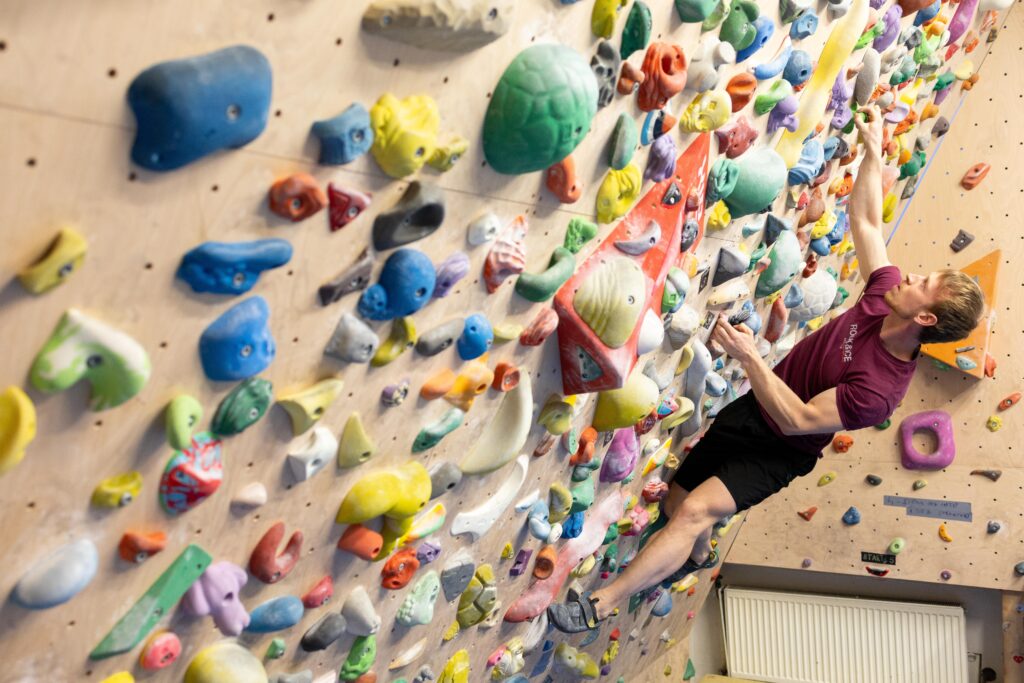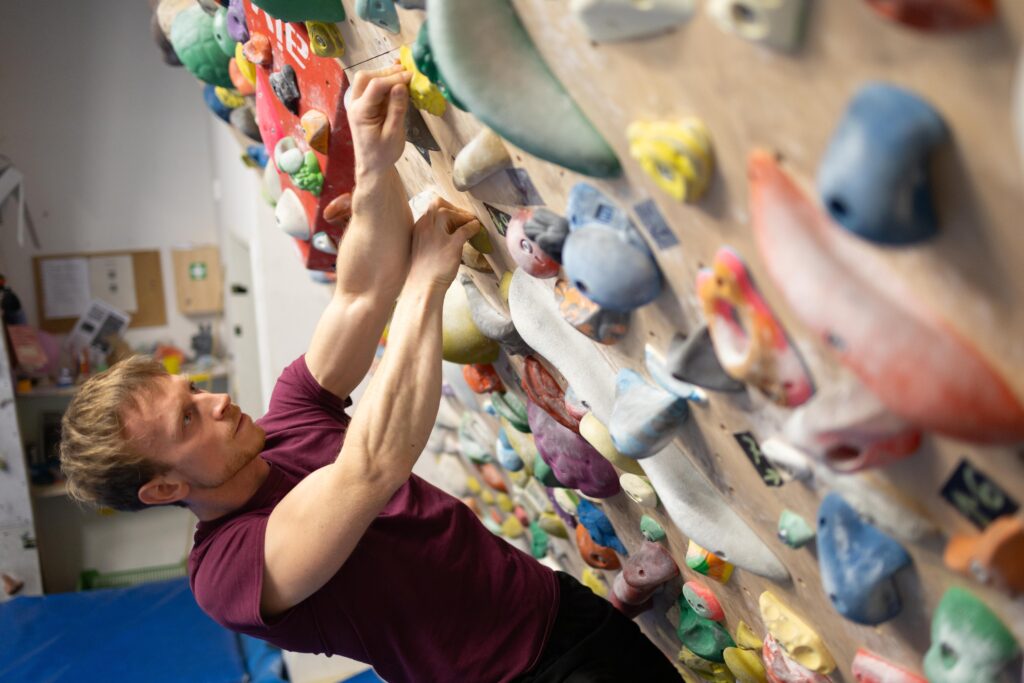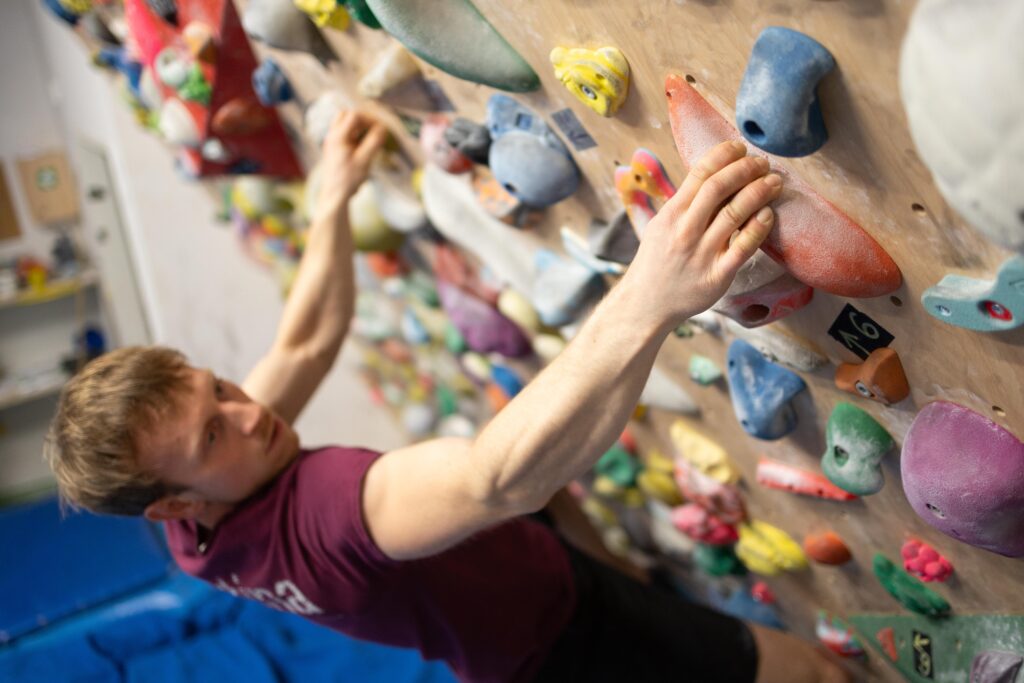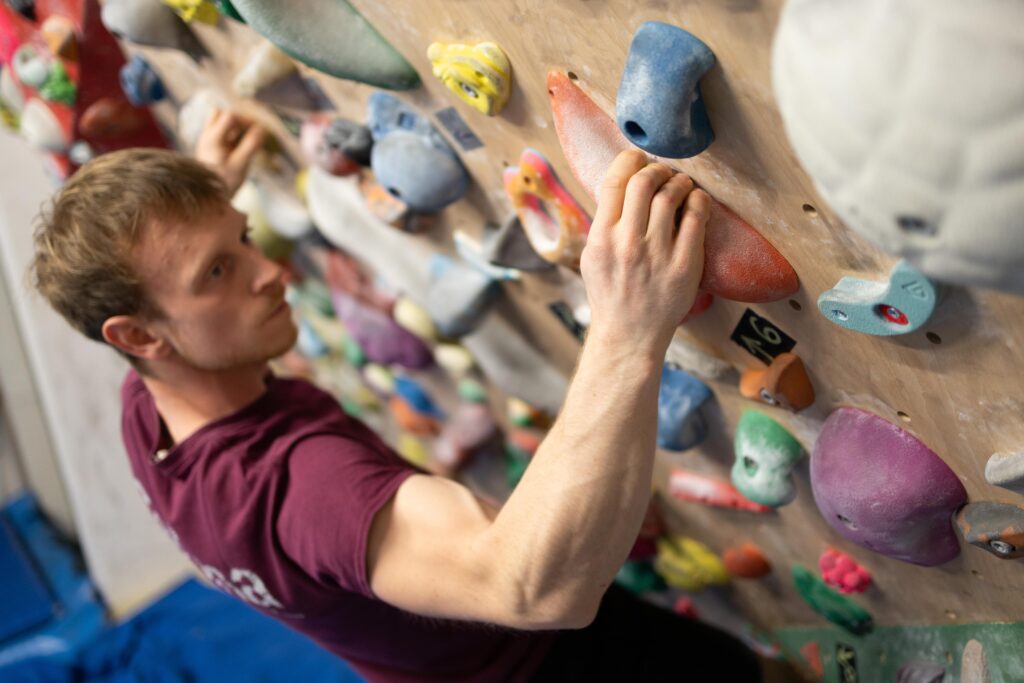Improve your climbing with the flow on the wall
• Individual coaching for climbers
• Improving climbing techniques online
• Optimalization of training plans
• Individual coaching for climbers
• Improving climbing techniques online
• Optimalization of training plans

Here’s How I Can Help You Climb Smarter
Hi, my name is Vít and I’ve been rock climbing for over 10 years. For the last years I have been interested in climbing technique, climbing efficiency, ergonomics of movement, doing climbing technique courses and I decided to pass on my experience.
Let’s see how we could improve your climbing!
Is this coaching right for you?
If you’re a climber who’s looking for a personal approach, regular guidance, and someone who adapts to your schedule, you’re in the right place. My coaching is designed for those who want to dive deeper into their climbing technique, progress steadily over time, and truly understand how to move better on the wall. Whether you’re juggling a busy life or simply value a flexible, long-term partnership – this is your opportunity to climb smarter, not harder.
Explore Coaching Plans
Whether you’re looking for continuous guidance to steadily improve or a one-time consultation to tackle a specific challenge, our coaching options are here to help you progress with confidence, clarity, and purpose.
Long-Term Coaching

$99/month
- Technique analysis from your videos
- Weekly personalized feedback
- Improving your movement patterns
- Unlimited email/WhatsApp support
One-Time Call

$40/45 min call
- One 45-minute consultation
- Tailored advice for your needs
- Clear and practical tips
- Follow-up summary
A Quick Climber’s Challenge
Both photos show the same move on the same hold – but only one is technically correct.
Can you spot the difference? And more importantly, do you know why it matters?
CLICK HERE to find out which one shows proper technique – and what the common mistake is.
Common mistake: First photo
The elbow is flared out, which increases strain on the shoulder and makes movement less stable.
The shoulder is elevated, putting it in a vulnerable position.
The grip is less efficient, often leading to faster fatigue or even injury.
The body is slightly too far from the wall, increasing effort unnecessarily.
Correct technique: Second photo
Here’s why:
The elbow is pointing down, helping to engage the back and shoulders more efficiently.
The shoulder is depressed and externally rotated, reducing stress on the joint.
The hand is gripping in a neutral position, allowing for better force transmission and joint safety.
The body stays closer to the wall, minimizing leverage and improving balance.

